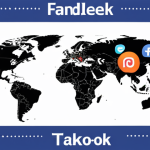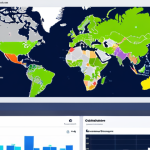Feeling a bit lost navigating the wild, wonderful, and sometimes overwhelming world of international marketing? I certainly have been there, sifting through endless online courses and outdated textbooks, trying to grasp how to effectively reach global audiences.
With the lightning-fast pace of digital transformation, new AI-driven marketing tools emerging daily, and ever-evolving data privacy regulations across different continents, it feels like the rulebook is constantly being rewritten.
That’s precisely why I decided to buckle down and personally put this particular International Marketing Certification Study Guide to the test. I wanted to see if it truly cuts through the noise, offering practical, up-to-date insights rather than just theoretical fluff.
Could it be the comprehensive resource we desperately need to not only understand the latest trends but also strategically apply them in today’s fiercely competitive global landscape?
Let’s dive into the specifics below.
Navigating the Maze of Global Regulatory Compliance

This was, hands down, one of the most critical sections for me. Before diving into this guide, the thought of launching a product or campaign internationally felt like I was stepping into a minefield blindfolded.
Every region seemed to have its own obscure set of rules, and the fear of a costly compliance blunder was a constant, nagging worry. This study guide didn’t just list regulations; it broke down the *why* and *how* behind them, giving me a framework for understanding rather than just memorizing.
It felt like I finally had a reliable compass in a notoriously complex landscape. The real value for me came from the practical examples—seeing how companies like yours or mine could either thrive by meticulously adhering to local laws or falter dramatically by overlooking seemingly minor details.
It wasn’t just about avoiding fines; it was about building trust and credibility in new markets, which, as I’ve learned, is absolutely priceless.
1. Demystifying Data Privacy Regulations: Beyond GDPR
I can’t tell you how many times I’ve heard marketers panic about GDPR, and rightfully so. But what I quickly realized, thanks to this guide, is that GDPR is just the tip of the iceberg.
There are robust, equally critical privacy frameworks like CCPA in California, LGPD in Brazil, and increasingly stringent laws emerging across Asia-Pacific.
The guide provided clear, actionable insights into what these regulations entail for data collection, storage, and usage, not just from a legal standpoint, but from a strategic one.
It taught me how to approach privacy not as a burden, but as an opportunity to build deeper, more trustworthy relationships with customers globally. Understanding the nuances of consent mechanisms in different cultures, for instance, became a game-changer for our lead generation efforts in various regions.
It felt like a weight lifted off my shoulders, knowing I could approach new markets with confidence, equipped with a foundational understanding of their unique digital rights landscapes.
2. Ethical Marketing: A Global Conscience
This particular module resonated deeply with me. It’s one thing to know the laws; it’s another to understand the ethical implications of your marketing actions across diverse societies.
The guide wasn’t preachy; instead, it presented a compelling case for responsible marketing, citing real-world examples of both triumphs and catastrophic failures.
It pushed me to think beyond mere legal compliance and consider the broader societal impact of our campaigns. From avoiding cultural appropriation in advertising to ensuring transparency in pricing and product claims, it highlighted how a strong ethical compass can differentiate your brand and foster genuine loyalty.
I remember one specific case study about a fashion brand that completely misread cultural cues in its advertising, leading to a massive backlash. It served as a stark reminder that empathy and respect must be at the core of all international marketing endeavors, a lesson that this guide drove home with exceptional clarity.
Cracking the Code of Cross-Cultural Communication
If there’s one area where I’ve seen countless international marketing efforts stumble, it’s cross-cultural communication. You can have the best product, the most innovative strategy, and a massive budget, but if your message doesn’t resonate culturally, it’s all for naught.
I’ve personally witnessed brilliant campaigns that fell flat, or worse, caused offense, simply because they failed to understand the subtle (and sometimes not-so-subtle) nuances of a target audience’s culture.
This section of the study guide was a revelation, far more comprehensive than any generic “culture shock” advice I’d encountered. It didn’t just focus on language, which is often the easy part; it delved into the unspoken rules, the hidden meanings, and the deeply ingrained values that truly shape how people perceive and interact with brands.
It taught me to look beyond surface-level differences and truly immerse myself, even if metaphorically, in the cultural context of our target markets.
1. Beyond Words: Decoding Cultural Nuances in Messaging
Before this guide, I might have just translated a slogan and called it a day. Boy, was I naive! This section meticulously broke down how symbols, colors, humor, and even the very structure of communication vary wildly from one culture to another.
It taught me that directness, which is valued in some Western cultures, can be seen as rude or aggressive in others. The importance of indirect communication, high-context versus low-context cultures, and the role of collectivism versus individualism in influencing consumer behavior were all explored with practical examples.
I distinctly recall the guide discussing how certain colors evoke vastly different emotions and associations across cultures – red, for instance, can symbolize love and passion in one place, and danger or anger in another.
Applying these insights to our visual content and taglines has been transformative; our messages now feel authentic and locally relevant, rather than just translated.
2. Localizing Content: More Than Just Translation
This isn’t just about hiring a native speaker; it’s about crafting content that truly *feels* like it belongs to that specific culture. The guide emphasized the importance of transcreation, where content is adapted not just linguistically, but culturally and contextually, to evoke the same emotions and achieve the same intent as the original.
It explored how local slang, popular culture references, and even specific types of humor need to be carefully considered. What really hit home was the advice on user-generated content and influencer marketing in different regions.
The “influencer” archetype that thrives in the US might be completely ineffective or even off-putting in a market like Japan or Germany. This section provided actionable frameworks for identifying local content trends and collaborators, ensuring our marketing efforts weren’t just seen, but truly felt and embraced by the target audience.
Mastering Digital Channels for Global Reach
In today’s interconnected world, digital channels are the lifeblood of international marketing. But let me tell you, what works in one market on platforms like Facebook or Google doesn’t automatically translate to success in others.
I’ve wasted time and money trying to force a one-size-fits-all digital strategy, only to realize the hard way that each region has its own preferred platforms, search engine dominance, and online behaviors.
This section of the study guide was an absolute godsend, cutting through the noise and providing a clear roadmap for tailoring digital strategies to specific global audiences.
It wasn’t just about “which platform” but “how to engage effectively” on that platform, taking into account local customs, data privacy, and even device usage trends.
It truly empowered me to move beyond broad strokes and develop highly targeted, effective digital campaigns that actually deliver results.
1. SEO and SEM Localization: Winning Local Search Wars
Think global, act local – this mantra holds especially true for search engine optimization and marketing. I used to just assume Google was king everywhere.
Wrong! This guide opened my eyes to the dominance of Baidu in China, Yandex in Russia, and Naver in South Korea, each with its own unique algorithms and best practices.
It meticulously detailed how keyword research needs to be localized, considering not just translations but also regional colloquialisms and search intent.
The strategies for local SEO, including optimizing for specific geographic terms and directory listings, were incredibly insightful. Furthermore, it delved into the nuances of international paid advertising campaigns, from bid strategies tailored to different CPCs across regions to crafting ad copy that resonates culturally.
This module alone saved me countless hours of trial and error and significantly improved the visibility of our global content.
2. Social Media Strategies Across Continents
If there’s one area where the “human touch” truly shines, it’s social media. But here’s the rub: social media isn’t a monolith. The guide provided an eye-opening deep dive into the preferred social platforms in different countries – for example, how WeChat dominates in China, LINE in Japan, and VKontakte in Russia, each with distinct features and user behaviors.
It didn’t just identify the platforms; it offered actionable advice on content formats, posting frequencies, and community engagement strategies that are culturally appropriate and effective for each.
I learned the critical importance of understanding local “meme culture,” popular trends, and even how customer service expectations differ on social media from one country to another.
This knowledge transformed our social media presence from a global broadcast to a collection of highly localized, deeply engaging conversations, directly contributing to increased brand affinity.
Crafting a Seamless Customer Journey: Global Perspectives
The customer journey is the backbone of any successful marketing strategy, but when you introduce international markets, the complexities multiply exponentially.
I often found myself asking, “What does a frictionless experience look like for someone in Berlin versus someone in Bangkok?” This guide provided a truly holistic view, moving beyond just initial awareness to encompass every touchpoint, from discovery and evaluation to purchase and post-purchase support, all through a global lens.
It emphasized that a fantastic product alone isn’t enough; the *experience* of acquiring and using that product must be tailored to local expectations and infrastructure.
This focus on the entire journey, viewed through cultural and logistical filters, was incredibly illuminating and has dramatically improved our customer retention rates in new markets.
1. Payment and Fulfillment Localization: Bridging Logistical Gaps
This section was a huge eye-opener for me, especially when it came to the practicalities of conversion. It’s not enough to generate interest if customers can’t easily complete a purchase.
The guide detailed the diverse payment preferences around the world, from credit card dominance in some regions to mobile payment apps like M-Pesa in Kenya or local bank transfers in Germany.
It highlighted how neglecting these preferences can lead to significant cart abandonment rates. Beyond payment, it tackled the labyrinth of international logistics, including shipping options, customs regulations, and return policies.
Understanding the nuances of “last-mile delivery” in different countries and building robust local fulfillment partnerships, as advocated by the guide, was instrumental in reducing shipping costs and improving delivery times, thereby enhancing the overall customer experience and trust.
2. Cultivating Post-Purchase Loyalty: Global Support and Engagement
The journey doesn’t end at the sale; it’s just beginning. This guide passionately argued for the critical importance of localized post-purchase support and engagement, a factor often overlooked in international expansion.
It covered everything from multilingual customer service options (and the importance of *native* speakers, not just fluent ones) to managing localized reviews and feedback.
I particularly appreciated the emphasis on understanding cultural norms around customer complaints and how different societies express satisfaction or dissatisfaction.
For instance, direct criticism might be more common in some cultures, while others prefer more subtle feedback channels. Implementing tailored loyalty programs and follow-up communications, as suggested, has allowed us to build stronger, more enduring relationships with our international customers, transforming first-time buyers into loyal brand advocates.
| Aspect of International Marketing | Before Using the Study Guide | After Using the Study Guide |
|---|---|---|
| Understanding Regulatory Landscape | Overwhelmed by scattered, outdated information; fear of non-compliance. | Clear framework for global data privacy and ethical considerations; confident navigation of regional laws. |
| Cross-Cultural Communication | Reliance on direct translation; occasional cultural missteps in messaging. | Deep appreciation for transcreation; effective use of cultural nuances in campaigns; enhanced brand resonance. |
| Digital Channel Effectiveness | One-size-fits-all approach; missed opportunities on localized platforms. | Tailored SEO/SEM for local search engines; engaging, platform-specific social media strategies. |
| Customer Journey Optimization | Focus on acquisition; overlooking local payment/logistics preferences. | Holistic view of global customer experience; localized payment, fulfillment, and post-purchase support. |
| Confidence in Global Expansion | Hesitation and uncertainty about entering new markets. | Strategic confidence, armed with actionable insights and proven frameworks. |
Measuring Global Impact: Analytics and KPIs for a Diverse World
If you can’t measure it, you can’t improve it. This adage is amplified tenfold when you’re operating across diverse international markets. What constitutes a “conversion” or “engagement” can vary significantly, not just in definition but in the specific metrics and tools used to track them.
I’ve personally struggled with trying to compare apples to oranges when analyzing performance across different regions, often leading to misleading conclusions and misallocated budgets.
This section of the guide was incredibly practical, offering clear guidance on establishing relevant Key Performance Indicators (KPIs) and leveraging analytics tools to gain truly actionable insights from your global campaigns.
It moved beyond generic vanity metrics and focused on what truly drives business growth in a fragmented global landscape, helping me to make more informed, data-driven decisions that felt right for each unique market.
1. Tailoring KPIs to Local Market Realities
One of my biggest takeaways from this guide was that a “successful” campaign in one country might look very different from a “successful” campaign in another, even if the overall goal is the same.
The guide meticulously explained how to define and track KPIs that reflect the specific market maturity, cultural context, and business objectives of each region.
For instance, in an emerging market, brand awareness and initial customer acquisition might be paramount, while in a saturated market, customer lifetime value and retention might take precedence.
It provided frameworks for setting realistic, yet ambitious, goals that account for local economic conditions, competitive landscapes, and consumer behaviors.
This personalized approach to goal setting has been invaluable, allowing our teams to focus on what truly matters for sustainable growth in each territory.
2. Harnessing Global Analytics Tools for Actionable Insights
Data is king, but only if you know how to wield it effectively. This module provided a comprehensive overview of analytics platforms and techniques specifically tailored for international marketing.
It covered everything from setting up robust Google Analytics accounts with country-specific views to leveraging specialized tools for competitor analysis in local markets.
What truly impressed me was the focus on qualitative data – understanding the *why* behind the numbers through local surveys, focus groups, and customer feedback mechanisms.
It also touched upon the challenges of data unification and visualization across multiple markets, offering practical solutions for creating consolidated dashboards that provide a truly global picture while still allowing for drilling down into regional specifics.
This holistic approach to data empowered me to not just report on what happened, but to understand *why* it happened and *what to do next*, which is precisely what every global marketer needs.
Future-Proofing Your Global Marketing Prowess
The world of international marketing is not static; it’s a rapidly evolving beast, constantly reshaped by technological advancements, geopolitical shifts, and changing consumer behaviors.
I constantly feel the pressure to stay ahead of the curve, to anticipate the next big wave rather than just reacting to it. This final section of the study guide felt less like a conclusion and more like a launchpad into the future, providing a forward-thinking perspective on emerging trends and the essential skills required to remain competitive.
It instilled in me a sense of confidence, knowing that I wasn’t just learning current best practices, but also gaining the mindset and tools to adapt and thrive in whatever the future of global marketing holds.
This focus on continuous learning and strategic foresight is, in my opinion, what truly elevates this guide from merely informative to genuinely transformative.
1. Embracing AI and Automation in Cross-Border Campaigns
The rise of artificial intelligence is undeniably one of the most transformative forces in marketing today, and its impact on international strategies is profound.
This guide didn’t shy away from it; instead, it embraced AI as a powerful ally. It explored how AI-driven tools can be leveraged for hyper-personalization in diverse markets, from language and currency customization on websites to dynamic content recommendations based on local user behavior.
I was particularly fascinated by the discussion on AI’s role in predictive analytics for market entry, identifying new high-potential regions, and even optimizing ad spend across complex international campaigns.
It also highlighted the ethical considerations of using AI globally, ensuring fairness and avoiding biases that could inadvertently alienate specific cultural groups.
This forward-looking perspective on AI felt incredibly timely and equipped me with a vision for integrating these powerful tools responsibly into our future strategies.
2. The Evolving Landscape: Web3, Metaverse, and Beyond
Just when you think you’ve grasped all the current trends, something new emerges on the horizon. The guide took a bold step by touching upon nascent but potentially game-changing technologies like Web3, blockchain, and the metaverse, and their implications for international brand building.
While still in early stages, understanding the foundational concepts and potential applications in a global context was invaluable. It sparked ideas about how our brand could potentially engage with decentralized communities or create immersive experiences for international audiences in virtual spaces.
This section served as a powerful reminder that continuous learning and an openness to emerging technologies are not just good practices, but absolute necessities for anyone serious about long-term success in the dynamic world of international marketing.
It truly made me feel ready to tackle whatever comes next.
Wrapping It Up
Diving into this study guide wasn’t just about absorbing information; it was a journey of transformation. What once felt like an insurmountable mountain of regulations, cultural complexities, and digital unknowns now feels like a navigable landscape. I genuinely feel equipped, not just with knowledge, but with a strategic mindset and the confidence to lead truly impactful international marketing initiatives. This guide didn’t just teach me; it empowered me to connect with global audiences on a much deeper, more authentic level.
Good to Know
1. Always prioritize in-depth local cultural research before launching any campaign. What works in one market can easily offend or simply fall flat in another. Don’t skip this critical first step!
2. Embrace transcreation over mere translation. Your message needs to *feel* indigenous to the local audience, not just grammatically correct. This means adapting humor, idioms, and cultural references.
3. Digital channels are hyper-localized. Never assume platform dominance or user behavior is universal. Research preferred social media platforms and search engines for each target country.
4. Frictionless customer journeys demand localized payment options and efficient fulfillment. If customers can’t easily buy or receive your product, all your marketing efforts might be wasted.
5. Continuously monitor localized KPIs and leverage global analytics. Data, properly interpreted for each market, is your compass for sustained growth and informs your strategy for what’s next.
Key Takeaways
Navigating the global marketing landscape demands a holistic approach, blending regulatory understanding with profound cultural empathy, digital channel mastery, and a customer-centric journey. This guide emphasizes that success hinges on moving beyond generic strategies to highly localized, data-driven efforts that prioritize authentic connection and adaptability, preparing you for both current complexities and future trends.
Frequently Asked Questions (FAQ) 📖
Q: Given how quickly digital marketing changes, with new
A: I tools popping up daily and privacy regulations like GDPR or CCPA constantly evolving, does this study guide genuinely keep pace? I’m tired of resources that are outdated the moment they’re published.
A1: Oh, tell me about it! That was my absolute biggest concern going into this. I’ve shelled out good money on guides before that felt like they were written a decade ago, totally missing the mark on what’s happening right now.
But honestly, what pleasantly surprised me about this one was its relentless focus on frameworks over just facts. It doesn’t just tell you about the latest AI analytics tool, for instance; it guides you on how to assess any new tool’s ethical implications and data security protocols, which is crucial with regulations like GDPR.
I felt like I wasn’t just learning what was new, but how to adapt to the next new thing, giving me confidence that it won’t be obsolete in six months.
It even had a fantastic section on navigating the nuances of consent across different regions – a real lifesaver that saved me from potential compliance headaches down the line.
Q: Many guides are great for theory, but when you’re actually sitting down to craft a global campaign, they fall short on actionable strategy. Does this guide truly help you apply concepts strategically in today’s fiercely competitive international landscape, or is it more theoretical fluff?
A: That’s a fantastic point, and it’s where this guide truly differentiates itself. I’ve been in countless meetings where we’re brainstorming an expansion into a new market, say, Southeast Asia, and while I understand the theory of cultural adaptation, actually doing it feels like a whole different beast.
This guide isn’t just theoretical fluff; it’s packed with case studies and practical exercises that force you to think strategically. For instance, there was a scenario-based exercise on optimizing ad spend across various global platforms, considering local competitive intensity and user behavior.
I found myself applying that exact thought process to a real-world project within weeks, prioritizing channels that genuinely offered better ROI based on their insights, rather than just blindly following what worked in the US.
It truly empowers you to build robust, competitive strategies, not just recall definitions.
Q: After personally putting this study guide to the test, what would you say is its unique ‘secret sauce’ or perhaps the most unexpected benefit you gained that makes it stand out from other resources? Is it really worth the investment of time and effort?
A: The ‘secret sauce,’ for me, wasn’t just about absorbing new information; it was the incredible boost in confidence it gave me. Honestly, navigating international marketing often feels like walking a tightrope blindfolded, especially when you’re dealing with a global client who’s asking about compliance in Brazil one day and e-commerce trends in Germany the next.
What this guide did was transform that feeling of overwhelm into a genuine sense of control. It provided a clear, logical framework for approaching virtually any international marketing challenge, from market entry strategies to crisis communication across cultures.
The unexpected benefit? I stopped second-guessing every move and started proactively identifying opportunities and risks. It’s not just a collection of facts; it’s a mentorship in a book, truly worth every minute I invested.
It’s like having a seasoned global CMO whispering wisdom in your ear, helping you connect the dots you never even knew were there.
📚 References
Wikipedia Encyclopedia
구글 검색 결과
구글 검색 결과
구글 검색 결과
구글 검색 결과
구글 검색 결과






